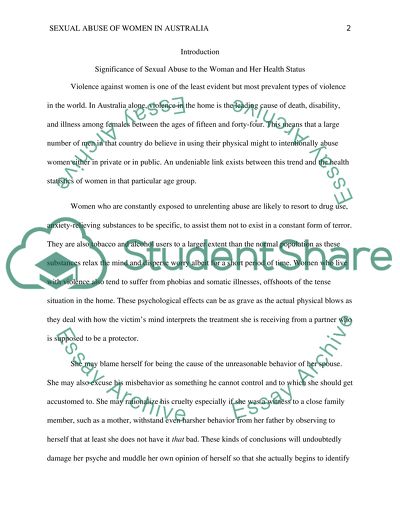Cite this document
(“Sexual Abuse Of Women In Australia Essay Example | Topics and Well Written Essays - 1750 words”, n.d.)
Sexual Abuse Of Women In Australia Essay Example | Topics and Well Written Essays - 1750 words. Retrieved from https://studentshare.org/nursing/1434514-sexual-abuse-of-women-in-australia
Sexual Abuse Of Women In Australia Essay Example | Topics and Well Written Essays - 1750 words. Retrieved from https://studentshare.org/nursing/1434514-sexual-abuse-of-women-in-australia
(Sexual Abuse Of Women In Australia Essay Example | Topics and Well Written Essays - 1750 Words)
Sexual Abuse Of Women In Australia Essay Example | Topics and Well Written Essays - 1750 Words. https://studentshare.org/nursing/1434514-sexual-abuse-of-women-in-australia.
Sexual Abuse Of Women In Australia Essay Example | Topics and Well Written Essays - 1750 Words. https://studentshare.org/nursing/1434514-sexual-abuse-of-women-in-australia.
“Sexual Abuse Of Women In Australia Essay Example | Topics and Well Written Essays - 1750 Words”, n.d. https://studentshare.org/nursing/1434514-sexual-abuse-of-women-in-australia.


